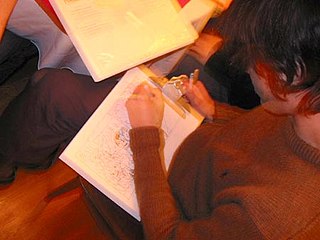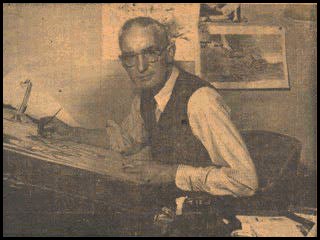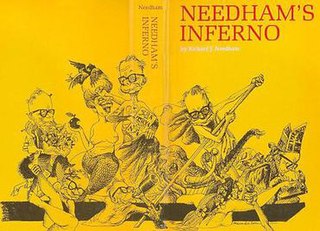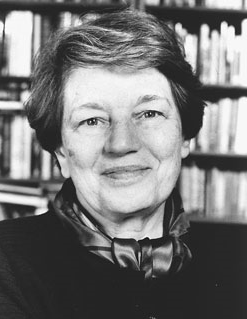Related Research Articles

Quebec comics are French language comics produced primarily in the Canadian province of Quebec, and read both within and outside Canada, particularly in French-speaking Europe.

Gregory Gallant, better known by his pen name Seth, is a Canadian cartoonist. He is best known for his series Palookaville and his mock-autobiographical graphic novel It's a Good Life, If You Don't Weaken (1996).

Albéric Bourgeois was a Canadian cartoonist, credited with creating the first continuing comic strip to use word balloons in Canada.

Douglas Austin Wright was a Canadian cartoonist, best known for his weekly comic strip Doug Wright's Family. The Doug Wright Awards are named after him to honour excellence in Canadian cartooning.
Peter Whalley was a Canadian caricaturist, cartoonist, illustrator and sculptor.

Marc Bell is a Canadian cartoonist and artist. He was initially known for creating comic strips, but Bell has also created several exhibitions of his mixed media work and watercoloured drawings. Hot Potatoe [sic], a monograph of his work, was released in 2009. His comics have appeared in many Canadian weeklies, Vice, and LA Weekly. He has been published in numerous anthologies, such as Kramers Ergot and The Ganzfeld.

The Canadian cartoonist James Llewellyn Frise is best known for his work on the comic strip Birdseye Center and his illustrations of humorous prose pieces by Greg Clark.

Walter George Ball was a Canadian cartoonist. Ball was noted for the comic strip feature Rural Route, which became a familiar fixture in the Star Weekly between 1956 until the publication's demise in 1968. He was born in Essa, Ontario.

Duncan Ian Macpherson, CM was a Canadian editorial cartoonist. He drew for the Montreal Standard and for Maclean's, illustrating the writings of Gregory Clark and Robert Thomas Allen. He is most famous for his humorous political cartoons for the Toronto Star; from 1958 until 1993. His syndicated cartoons appeared in seven other Canadian newspapers, in Time, The New York Times, Chicago Daily News and nearly 150 newspapers across the world.

The Montreal Star was an English-language Canadian newspaper published in Montreal, Quebec, Canada. It closed in 1979 in the wake of an eight-month pressmen's strike.

Mavis Leslie de Trafford Gallant,, née Young, was a Canadian writer who spent much of her life and career in France. Best known as a short story writer, she also published novels, plays and essays.

The Canadian Cartoonist Hall of Fame, formally known as Giants of the North: The Canadian Cartoonist Hall of Fame, honours significant lifelong contributions to the art of cartooning in Canada.

Gregory Clark, was a Canadian war veteran, journalist, and humourist.
Katherine Shannon Collins is a Canadian-born cartoonist, writer, media personality, stage performer, and composer.
James Nathaniel Simpkins was a Winnipeg-born Canadian cartoonist and artist. He was one of the original artists at the National Film Board of Canada where he worked for many years before launching a successful freelancing career. His cartoon character Jasper the Bear was famous throughout Canada from 1948 to 1972 and remains as the mascot of Jasper National Park.

Life's Like That was a gag panel by Fred Neher which found humor in life's foibles. Spanning five decades -- from October 1, 1934 to August 20, 1977 — the panel was initially distributed by Consolidated News Features, and later by the Bell-McClure Syndicate and the United Feature Syndicate.
Canadian comics refers to comics and cartooning by citizens of Canada or permanent residents of Canada regardless of residence. Canada has two official languages, and distinct comics cultures have developed in English and French Canada. The English tends to follow American trends, and the French, Franco-Belgian ones, with little crossover between the two cultures. Canadian comics run the gamut of comics forms, including editorial cartooning, comic strips, comic books, graphic novels, and webcomics, and are published in newspapers, magazines, books, and online. They have received attention in international comics communities and have received support from the federal and provincial governments, including grants from the Canada Council for the Arts. There are comics publishers throughout the country, as well as large small press, self-publishing, and minicomics communities.
The Star Weekly magazine was a Canadian periodical published from 1910 until 1973. The publication was read widely in rural Canada where delivery of daily newspapers was infrequent.
Weekend was a long-running Canadian magazine and newspaper supplement. The Montreal Standard was founded in 1905 as a weekly newspaper and was purchased by the Montreal Star in 1925. In 1951 the Standard was relaunched in magazine format as Weekend Picture Magazine serving as a newspaper supplement for the Montreal Star and eight other local newspapers across Canada. Eventually shortening its name to Weekend, the magazine, printed using the rotogravure process, included features writing, cultural and entertainment reporting, cartoons by Doug Wright, colour advertising and photographs and recipes among other items. The magazine began with a circulation of 900,000 and peaked in the 1960s when it was carried in 41 newspapers and had a circulation of 2.5 million, making it the largest circulation magazine in Canada. In 1959 a French-language edition, Perspectives, was launched.

Michael DeForge is a Canadian comics artist and illustrator.
References
- ↑ J.L. Granatstein. "Montreal Standard". Canadian Encyclopedia.
- ↑ "Montreal Standard". NNDB.
- ↑ Marlene Epp; Franca Iacovetta (2016). Sisters or Strangers?: Immigrant, Ethnic, and Racialized Women in Canadian History - Second Edition. University of Toronto Press. p. 6. ISBN 978-1-4426-2913-4.
- 1 2 "NAMESAKES: DOUG WRIGHT PARK". Mark McNeil, Hamilton Spectator, Sep 03, 2013
- ↑ The Uncertain Mirror: Senate Committee on Mass Media, Volume I.
- ↑ "Weekend Magazine collection [graphic material]".
- ↑ Mavis Gallant at The Canadian Encyclopedia.
- ↑ Victoria Ahearn, "Mavis Gallant, legendary short story writer, dies at 91". Toronto Star, Feb. 18, 2014
- ↑ Lawrence Earl Archived 2016-03-04 at the Wayback Machine . New Brunswick Literary Encyclopedia, 2008.